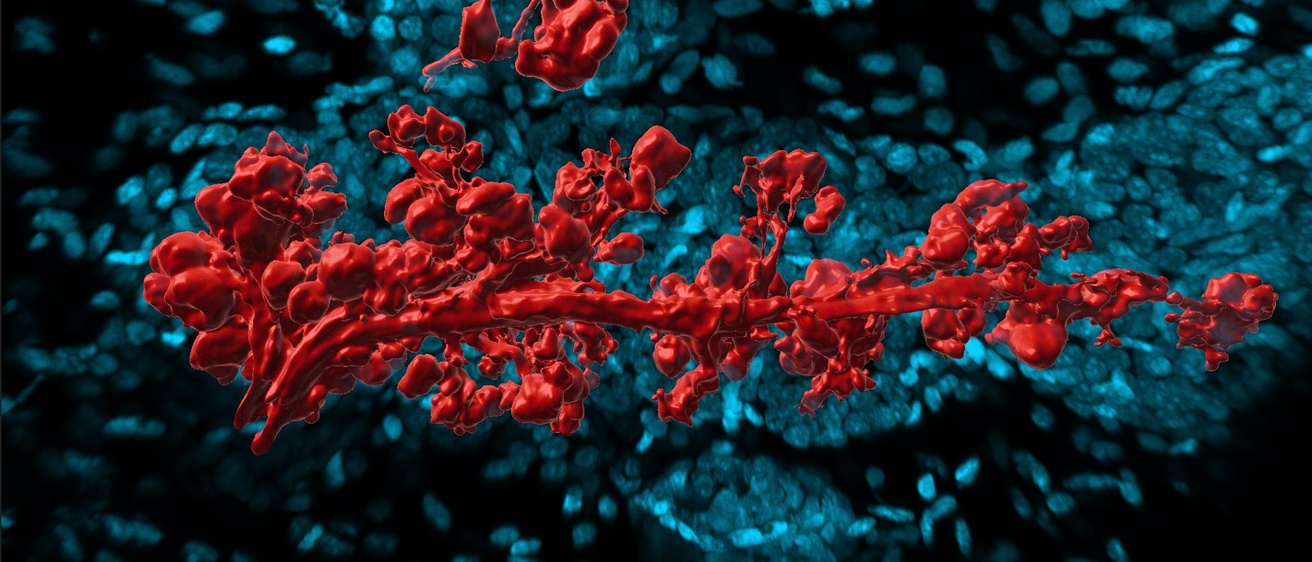Like squeezing toothpaste from the tube, mucus is expelled from special glands onto the airway surface where it helps protect lungs from harmful substances, including germs, particles, and pollutants. A new UI study shows that the “squeeze” is generated when cells around the submucosal glands contract in response to a chemical produced by bacteria and inflammatory cells.
The new finding reveals how rare chemosensing cells, positioned inside the submucosal glands, act as local sensors for this chemical signal. These pulmonary neuroendocrine cells (PNECs) are known to occur on the airway surface where they detect whatever lands on, or is produced in, the thin layer of liquid that coats the lung’s air passages.
In the new study, the UI team, led by Wenjie Yu, PhD, a postdoctoral associate in Mike Welsh’s lab, showed that PNECs also exist deep within the submucosal glands, which produce much of the mucus that the lung uses to bind and clear bacteria and pollutants. Yu and his colleagues discovered that when these PNECs detect succinate, the chemical produced by bacteria and inflammatory cells, they instruct surrounding cells to squeeze, which pushes mucus out of gland to defend the lung. The study is published in Developmental Cell.
In cystic fibrosis (CF) the composition of mucus is thicker and stickier than normal and tends to clog the airway and hinder clearance of harmful substances. The new study suggests that abnormal CF mucus may block the submucosal gland and prevent the succinate from reaching the PNECs. This could impair the function of the gland and potentially contribute to lung disease in CF.
In addition to Yu and Welsh, the UI team also included Thomas Moninger, Michael Rector, and David Stoltz.
